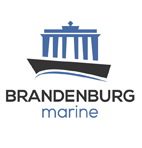Loss Prevention Advice
- Details
- News /
A surveyor to assist a master with the loading of a bulk ore cargo. The loading was fast, and the cargo was poured into the holds from a loading spout. Upon reviewing images of the loaded cargo after the ship had departed, it became evident that the cargo was piled high in the centre of the hold and had not been ‘trimmed’ to the sides.
The process of trimming is important for many reasons:
- Ship stability: At sea, the ship and cargo will be subject to longitudinal and lateral forces. If the cargo piles collapse to one side, this can affect overall stability of the vessel due to the shift of weight and could endanger it
2. Minimising air in the cargo: Effective trimming will minimise the volume of air entering the cargo. The greater the amount of air within the cargo, the more likely it will be to self-heat, if relevant, such as for various Group B cargoes
3. Weight distribution: To ensure an even weight distribution across the tank top with respect to tank top weight limitations. In practice this means spreading the cargo as widely as practicable to the boundary of the cargo space to prevent excessive loading on the tank top (or tween deck if applicable)
4. Regulatory compliance: Trimming may be required by regulation, such as the requirements within the International Maritime Solid Bulk Cargoes (IMSBC) code or the Grain code
5. Efficiency in discharging: A properly trimmed level cargo will generally make unloading operations more efficient and reduces the likelihood of uncontrolled shifting during discharging operations.
- Details
- News /
Crew members passing through Kinshasa are advised to stay off the streets due to ongoing riots and safety risks. Despite the unrest, port operations in Kinshasa and Matadi continue as normal, and transit remains open. Stay informed and remain vigilant.
- Details
- News /
The South African Revenue Service (“SARS”) has been cracking down on compliance in respect of petroleum products, including the provision of bunkers to foreign going vessels.
Full advisory at the following link.
- Details
- News /
On 11 February, Turkey’s Directorate General of Coastal Safety (KEGM) reported a fuel leakage during a bunkering operation at Ahırkapı Anchorage.
The incident involved the crude oil tanker JAG and oil product tanker GOKDENIZ and occurred at Ahırkapı Anchorage, off the coast of Istanbul. During the bunkering operation, fuel discharge from the crude oil tanker resulted in water contamination in the area.
In response, KEGM deployed multiple vessels, including KEGM-3 and KEGM-4 lifeboats, an environmental barge and a tugboat along with a rescue specialist to contain the pollution.
The sea surface was cleaned after the work carried out by the response teams.



